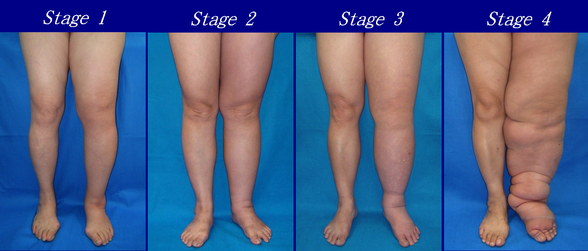As we conclude our 3-part series we will be discussing the most problematic and serious condition: LYMPHEDEMA.
Lymphedema is a chronic condition that occurs when the lymphatic system, which is responsible for draining excess fluid from tissues, becomes compromised, leading to the accumulation of protein and water in the tissue. While there is no cure for lymphedema, various treatment options can help manage the condition, improve symptoms, and enhance the quality of life for those who suffer from it.
Lymphedema can occur in two forms: primary and secondary.
- Primary Lymphedema: This is often caused by genetic factors and usually manifests at birth or during puberty. It results from an underdeveloped or abnormal lymphatic system, leading to impaired lymphatic drainage and subsequent swelling in various parts of the body.
- Secondary Lymphedema: The more common form, this typically arises as a result of damage to the lymphatic system. Surgery, radiation therapy, injury, infection, or cancer can all trigger the onset of secondary lymphedema.
Common Symptoms of Lymphedema
- Swelling in one or more limbs, such as arms or legs.
- A feeling of heaviness or tightness in the affected area.
- Restricted range of motion in the affected limb.
- Pain, discomfort, or aching in the affected area.
- Skin changes, including thickening, hardening, or redness.

Treatment Options
While lymphedema is a chronic condition that cannot be completely cured, there are several treatment options available to manage the symptoms and prevent the condition from worsening. Treatment plans are typically tailored to the individual’s needs and may include:
- Manual Lymphatic Drainage (MLD): MLD is a specialized massage technique performed by certified therapists. It helps stimulate lymphatic flow and reduce swelling in the affected area.
- Compression Therapy: Wearing compression garments, such as sleeves or stockings, can help prevent fluid buildup and maintain reduced swelling.
- Exercise and Physical Therapy: Targeted exercises can promote lymphatic drainage and improve muscle strength and flexibility in the affected limb.
- Complete Decongestive Therapy (CDT): CDT combines various techniques, including MLD, compression therapy, exercise, and skincare, to manage lymphedema effectively.
- Surgical Interventions: In severe cases of lymphedema that do not respond to other treatments, surgical options like lymphaticovenous anastomosis (LVA) or vascularized lymph node transfer (VLNT) may be considered to improve lymphatic flow.
- Medications: Some medications, such as diuretics, may be prescribed to manage fluid retention.
- Self-Care: Patients can actively manage their condition by practicing good hygiene, maintaining a healthy weight, exercising, and avoiding injury or infection in the affected limb.
Lymphedema is a chronic condition that requires ongoing management, but with the right treatment and support, you can still live your life and enjoy it.
In Good Hands,
Rebecca Tamm, LMT, MLD-C